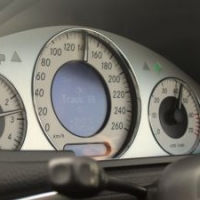Augmented Reality Technology Begins to Eclipse Its Gimmicky Past

About a year ago my children were begging me for a series of Chick-fil-A comics that “came to life.” We stopped on the way home from school, grabbed three or four of the comic books, and raced home. After a quick download of the restaurant’s app, we pointed my phone at the books and watched cows jump from the page and perform a variety of kung-fu moves.
And after those thirty seconds of enjoyment, we never opened the app again.
Six months later, my children were begging for T-shirts emblazoned with lions, which, after the download of another app, jumped from the shirts, roared, and moved so convulsively you were sure to have a seizure if you stared at them for more than five seconds. Lucky for us, we never looked that long, or, like with Chick-Fil-A, ever again.
Finally, augmented reality (AR) is being developed into much more useful applications.
German automaker Volkswagen recently unveiled MARTA (Mobile Augmented Reality Technical Assistance) at the 2013 InsideAR conference. AR developers Metaio hosts this annual event, and they’re also the company behind Volkswagen’s newest venture.
Coinciding with the upcoming release of Volkswagen’s $150,000, limited edition XL1 automobile, the automaker used the InsideAR conference to “show off an augmented reality project that will allow technicians to simulate repairs of the vehicle on a tablet computer before breaking out the wrenches,” according to Danny King of GreenAutoBlog.
I don’t drive a $150,000 automobile, but if I did, I certainly wouldn’t mind a technician being able to do a trial run before he or she starts yanking out vital parts.
Mercedes-Benz is unveiling its own foray into AR at the InsideAR conference, dubbed DICE (Dynamic and Intuitive Control Experience) that offers auto owners the opportunity to have a “video-centric experience inside the car,” but in this case, while you’re driving it—not just when it’s in the shop.
My immediate fear after reading this was, “I don’t want drivers having video-centric experiences; I want them watching the road,” and Mercedes-Benz addresses this in a pretty cool way. John Brandon at PCWorld writes:
…It relies on the Mercedes-Benz Splitview technology, where the in-dash display shows one view to the driver and another view to the passenger. The driver might see the navigation route, and the passenger would see points of interest, such as a panoramic view or a live geocache pop-up located along the current route, ready for plundering.
It’s refreshing to see a technology as cool as AR not continuing to be limited to its early cheap and gimmicky applications. From wearables like Google Glass to car windshields, AR is sure to become more common in our daily lives in the future—and probably just in time for my older child to turn sixteen and demand a car equipped with the technology.
For his sake, I hope it’s available from automakers a little more in my price range.

